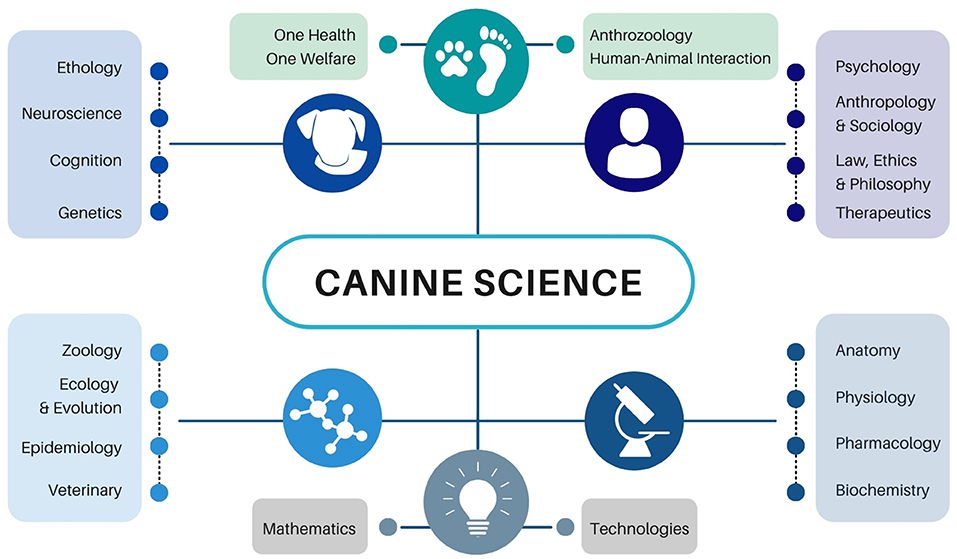Canine research is a fascinating field that explores the depths of the human-canine bond and the unique capabilities of dogs. With studies examining dog behavior, empathy, and cognition, scientists at institutions like the Harvard Canine Brains Lab are uncovering how our furry companions think and feel. This research not only sheds light on dog empathy but also enhances our understanding of the emotional connections we share with our pets. By utilizing advanced techniques like MRI scans, researchers are able to study the neurological underpinnings of behaviors that define the canine experience. As public interest in dog behavior studies grows, initiatives such as “The Dogist” provide a visual narrative that complements academic findings, reinforcing the profound impact of dogs in our lives.
When we examine the world of canine studies, we delve into an area rich with insights into dog psychology and behavior. These investigations, often blending scientific inquiry with artistic representation, reveal the intricate nature of dogs and their relationships with humans. By analyzing the way these loyal companions interact within social settings, researchers aim to understand the evolutionary traits that have shaped their behavior over centuries. This interdisciplinary approach not only enhances our appreciation for dogs as companions but also deepens our knowledge of how they perceive and respond to human emotions. As interest in the intrinsic bond between people and their dogs continues to rise, so does the significance of research in enriching our understanding of these remarkable animals.
Understanding Dog Empathy through Canine Research
Canine research has dramatically expanded our understanding of dog empathy, revealing how sensitive and responsive dogs can be to human emotions. Studies performed at places like the Harvard Canine Brains Lab illustrate that dogs frequently display signs of emotional awareness, as demonstrated by their reactions during various tests. For example, when a human pretends to be hurt, many dogs instinctively rush to offer comfort, often by licking the afflicted person. These instances highlight not only their empathetic nature but also their deep social connection to humans, underpinning the age-old bond we share with our canine companions.
Moreover, research led by experts such as Erin Hecht is unveiling the complexities of a dog’s emotional world through innovative methods such as MRI scans. By observing different brain activity in response to stimuli, researchers can categorize various emotional responses, including fear and aggression. This nuanced understanding is essential not just for canine behavior studies, but also for enhancing our relationships with dogs, enabling us to respond more effectively to their needs.
The Human-Canine Bond: Insights from the Harvard Canine Brains Lab
The bond between humans and dogs is one of the most profound examples of interspecies relationships, marked by mutual affection and understanding. Researchers at the Harvard Canine Brains Lab strive to uncover the scientific principles underpinning this bond. For instance, studies show that dogs have evolved to become exceptional companions, skilled at interpreting human emotions and behaviors. Their ability to form emotional attachments with humans stems from thousands of years of domestication, reinforcing a societal role that has made them indispensable to humans.
Hecht’s research highlights that dogs are biologically wired for social interaction, effectively making them ‘social partners’ in our lives. The adaptability of their cognitive styles to fulfill various human roles indicates that individual dog breeds have developed unique traits to enhance our connection. The insights gained from such research not only improve our understanding of dog behavior but also emphasize the importance of fostering these bonds for our collective well-being.
Capturing Dog Behavior: Lessons from The Dogist
Elias Weiss Friedman, the photographer behind ‘The Dogist,’ emphasizes the candid and genuine nature of dogs as perfect photographic subjects. His work illustrates how dogs reveal their thoughts and emotions through their expressions, which resonate with observers on a personal level. Each photograph tells a story, showcasing dogs’ true personalities and the deep emotions they experience, thus helping to foster a better understanding of their behavior and the human-canine connection.
By uniting visual storytelling with canine behavior studies, Friedman brings attention to the power of photographic art in the realm of canine research. The genuine and unfiltered expressions of dogs in his photographs invite viewers to ponder over the emotional lives of these animals. This synergy of art and science enriches our perception of dogs, encouraging us to appreciate their roles in our communities and the emotional complexities they possess.
The Role of Socialization in Canine Development
Socialization plays a critical role in shaping dog behavior and their interactions with humans. As highlighted by both Friedman and Hecht, social environments significantly influence a dog’s ability to form bonds. Dogs, starting from a young age, thrive on social interaction—not just with humans, but also with other dogs. When exposed to various social settings, dogs develop critical skills that dictate their behavior and emotional responses throughout life, informing their adaptability to different environments.
Friedman’s observation of dogs as ‘furry icebreakers’ illustrates how their presence can facilitate social interactions among humans. A dog’s need for regular exercise and social engagement encourages owners to engage with their communities, fostering social bonds that can lead to a greater understanding of diverse human experiences. This social aspect of dog ownership not only enriches the dogs’ lives but also enhances the human experience, underscoring the symbiotic relationship that exists between dogs and their owners.
Cognitive Capacity and Dog Behavior Studies
Understanding the cognitive capacities of dogs is vital for interpreting their behavior. Research at institutions like the Harvard Canine Brains Lab sheds light on the varying degrees of intelligence and emotional awareness within different dog breeds. Hecht’s findings demonstrate that tracking brain activity through MRI scans can reveal how different breeds exhibit traits such as trainability and emotional expression. This knowledge aids owners in selecting appropriate training methods and activities that cater to their dog’s unique cognitive profile.
In addition to breed-specific studies, ongoing research into the impact of early life experiences on cognitive development is crucial. Dogs that face trauma or stress in their formative years often exhibit different behavioral patterns compared to their peers. Understanding these variances not only helps in improving dog training techniques but also serves to inform owners about the critical role they play in a dog’s overall emotional and cognitive well-being.
The Evolution of Dogs as Social Partners
The evolution of dogs as social partners to humans has been shaped by both biological and social factors. Over thousands of years, dogs have developed traits that complement human lifestyles, making them effective companions. Hecht emphasizes that dogs have been bred not only for work but also for their ability to connect emotionally with humans. This bond has imbued them with personality traits that facilitate their role as our companions, guardians, and even therapists.
Today’s dogs are not only pets; they are integral members of families and communities. This evolution has led to varieties of breeds each with specific social skills that align with human lifestyles. By understanding the evolutionary pathways that have brought dogs into our lives, researchers can better inform pet owners on how to cater to their dogs’ social and emotional needs, ensuring a fulfilling and harmonious coexistence.
Innovative Approaches in Canine Research
Innovative approaches in canine research, such as the use of neuroimaging and behavioral studies, are enhancing our understanding of dog psychology and behavior. Experts like Hecht are utilizing technology to explore how dogs think and feel, enabling a deeper comprehension of their emotional lives. These methods provide empirical data that validate intuitive notions about dog empathy and sociality, encouraging a more scientifically-informed approach to dog ownership and training.
Moreover, as interest in canine research grows, new methodologies are being implemented to investigate questions that impact the broader human-canine bond. This includes how varying environments and breeds influence a dog’s ability to connect with humans and with other dogs. Such research not only benefits dog owners by providing insights into training and care practices but also contributes to the overall welfare of canines in society.
The Impact of Canine Research on Dog Training
Research in canine behavior profoundly impacts dog training methods by providing insights into how dogs learn and interact with their surroundings. Understanding the emotional capacities of dogs allows trainers to develop techniques that cater to their social and cognitive needs. For instance, recognizing that dogs respond well to positive reinforcement aligns training practices with their innate behaviors, leading to more effective results.
Furthermore, the findings from studies about early developmental experiences and their impact on behavior underscore the need for tailored training programs. Trainers can now take into account a dog’s specific background, adapting lessons to foster trust and facilitate learning processes, thus enhancing the bond between dog and owner. This scientific approach in training not only leads to better-behaved dogs but also promotes healthier relationships within the human-canine dynamic.
Exploring the Connection between Dogs and Human Well-being
The connection between dogs and human well-being is increasingly recognized in both scientific and cultural discourses. Numerous studies reveal that interaction with dogs can reduce stress levels, improve mood, and foster a sense of community among dog owners. The emotional support dogs provide through their companionship contributes not only to individual happiness but also promotes social cohesion within neighborhoods.
Moreover, this bond has practical implications for mental health. Therapy dogs, for example, play a crucial role in therapeutic settings, helping individuals cope with anxiety, depression, and trauma. Hecht’s research acknowledges this aspect, showing that understanding canine empathy can enhance therapeutic practices. By exploring how dogs respond to human emotions, we can harness their potential to improve human health and well-being significantly.
Frequently Asked Questions
What is the Harvard Canine Brains Lab researching about dog empathy?
The Harvard Canine Brains Lab is studying dog empathy by observing how dogs respond to their owner’s emotional expressions and behaviors. They focus on real-time reactions, such as comfort and support during distress, revealing deep insights into the human-canine bond and social intelligence in dogs.
How does canine research impact our understanding of the human-canine bond?
Canine research, particularly studies conducted by scientists like Erin Hecht at Harvard, enhances our understanding of the human-canine bond by uncovering how dogs’ social behaviors and emotional responses are intertwined with human interactions and relationships.
What role does ‘The Dogist’ play in canine research?
Elias Weiss Friedman, the founder of ‘The Dogist,’ contributes to canine research by capturing candid photographs of dogs that showcase their emotions and expressions, aligning with academic studies on dog behavior and strengthening the narrative of the human-canine bond.
What insights do dog behavior studies provide about canine emotions?
Dog behavior studies utilize methods like MRI scans to investigate canine emotions, revealing how breeds react to fear, aggression, and empathy. This research helps pet owners understand their pets better and appreciate the emotional complexity of dogs.
How do cognitive styles in dogs vary according to canine research findings?
Canine research indicates that cognitive styles among dogs vary greatly, shaped by their historical functions and breeding. Some breeds exhibit high social intelligence and adaptability while others are more territorial or task-oriented, illustrating the diversity in dog behavior.
Why is it important to study dogs with behavioral issues in canine research?
Studying dogs with behavioral issues related to early life stress or trauma is crucial in canine research as it helps identify effective interventions and fosters a deeper understanding of how these experiences affect the human-canine bond and overall canine welfare.
Can canine research reveal if dogs have favorite humans?
Yes, canine research suggests that dogs can develop favorites among humans, often based on interactions and activities shared. This insight into dog behavior informs pet owners about their dogs’ social dynamics and preferences.
What makes canine research a significant field of study?
Canine research is significant as it not only enhances our understanding of dogs but also deepens the insight into the biology and psychology of human-animal interactions, enriching both pet ownership experiences and scientific knowledge about animal behavior.
| Aspect | Details |
|---|---|
| Research Focus | Studying canine faces and brains to understand behavior and empathy. |
| Key Figures | Erin Hecht (Harvard researcher) and Elias Weiss Friedman (Dogist photographer). |
| Research Methods | Hecht uses MRI imaging; Friedman uses photography to document dogs’ expressions. |
| Canine Behavior | Study reveals variability in canine brains and behaviors, enabling deeper insights. |
| Community Impact | Dogs serve as social catalysts, enhancing human connections. |
| Research Opportunities | Active recruitment for studies on dogs with behavioral issues and child-dog bonding. |
| Public Engagement | Friedman shares stories and photos that highlight the emotional depth of dogs. |
Summary
Canine research is significantly advancing our understanding of the bond between humans and dogs. Through innovative studies conducted by Harvard researchers, insights into canine empathy, behavior, and socialization are being revealed. The collaborative work between scientists and photographers not only enhances our knowledge but also emphasizes the emotional connection that dogs provide to humans. Such research is crucial for both scientific inquiry and fostering stronger human-animal relationships.


